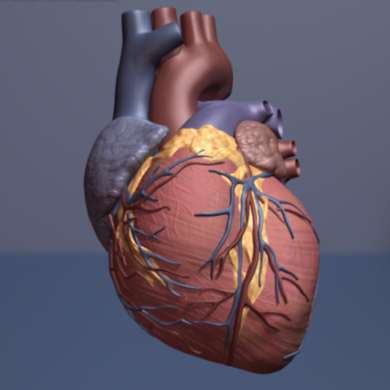This article has been reviewed according to Science X's editorial process and policies. Editors have highlighted the following attributes while ensuring the content's credibility:
fact-checked
peer-reviewed publication
proofread
Scientists discover first therapeutic target for preserving heart function in patients with pulmonary hypertension

A research team has discovered a possible therapeutic target for pulmonary hypertension. The study, published in the journal Science Advances, identifies the first therapeutic target that can be modulated to preserve cardiac function in pulmonary hypertension, providing hope in the fight against this rare but fatal disease for which there is currently no cure.
Pulmonary hypertension is a condition of elevated blood pressure in the arteries that carry deoxygenated blood to the lungs. This increased pulmonary blood pressure puts the heart under continuous strain as it has to work harder to pump blood to the lungs.
Pulmonary hypertension affects between 15 and 50 people per million of the world's population. In Spain, the estimated prevalence is 1.6 cases per 100,000 inhabitants, and the estimated incidence (new cases diagnosed per year) is 0.3 per 100,000 inhabitants.
The disease produces symptoms that can severely affect quality of life, including shortness of breath, dizziness, and fainting. In severe cases, patients can require transplantation to prevent death.
Risk factors for developing pulmonary hypertension include smoking, excess weight, a history of related conditions, genetic predisposition, and prolonged exposure to low atmospheric oxygen at high altitudes.
Currently available treatments target the lungs, aiming to lower blood pressure. However, these strategies do not improve cardiac function, making heart failure the main cause of death in these patients.
The researchers, led by Dr. Guadalupe Sabio at the Centro Nacional de Investigaciones Cardiovasculares (CNIC) in Madrid, found that patients with chronic obstructive pulmonary disease (COPD) have elevated levels of a mitochondrial protein called MCJ.
First author Ayelén M. Santamans observed that MCJ was also elevated in mice exposed to low oxygen levels and in pigs with induced cardiac injury. "These results therefore suggested that the MCJ protein might be involved in pulmonary hypertension. The lack of cardio-specific treatments for this disease spurred us to pursue this line of research."
The study results demonstrate that modulating the levels of MCJ in the heart can preserve cardiac function despite the presence of lung injury.
This protection is a consequence of the activation of a signaling pathway essential for adaptation to low oxygen levels, which prepares the heart to function properly in the absence of oxygen.
The authors conclude that these findings could open the way to therapeutic interventions against pulmonary hypertension, as they identify the first target whose modulation can preserve cardiac function in this fatal disease.
More information: Ayelén Santamans et al, MCJ: A mitochondrial target for cardiac intervention in pulmonary hypertension, Science Advances (2024). DOI: 10.1126/sciadv.adk6524. www.science.org/doi/10.1126/sciadv.adk6524





















